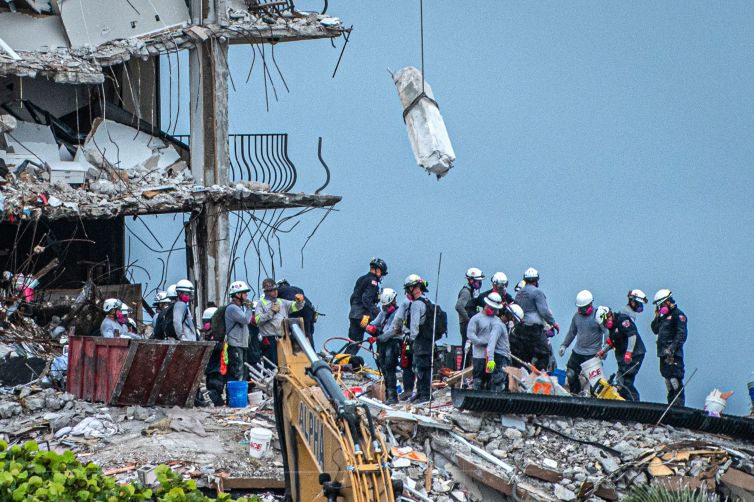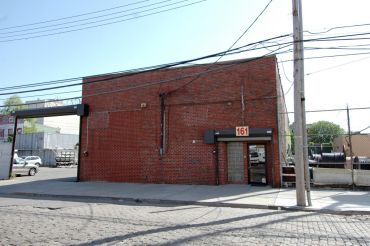Grand Jury Recommends Stricter, More Frequent Inspections After Surfside Collapse
By Chava Gourarie December 17, 2021 1:47 pm
reprints
A Miami-Dade County grand jury, tasked with reviewing the collapse of Champlain Towers South in Surfside in the summer, has released its findings, with a list of recommendations for local governments on how to prevent a similar tragedy.
The key recommendations include shortening the 40-year recertification process, beefing up the resources and authority of local building officials, and requiring building owners to commit to regular waterproofing and other maintenance.
After the 136-unit condominium building collapsed in June, killing 98 people, it became clear that there had been multiple warnings that the property was in dire need of repairs. The grand jury was convened to review the government policies and protocols that allowed the Champlain Towers South to reach the disastrous state it did.
When it collapsed, the 12-story waterfront building was undergoing a recertification required of buildings in Miami-Dade and Broward counties at 40 years old, and every 10 years thereafter. While the Champlain condo association began estimating repairs in 2018 to prepare for the 40-year recertification in 2021, it hadn’t begun the work recommended by the 2018 report it had commissioned, partially because those repairs would have cost millions of dollars that the association did not have in reserves. By 2021, the cost of the required repairs had ballooned to $14 million.
The grand jury found that similar problems, including deferred repairs, low reserves, and a toothless enforcement system of the 40-year rule, were commonplace throughout South Florida. That was reinforced by the multiple evacuations that occurred after the collapse, as local building agencies scrambled to audit their building stocks and deal with a backlog of recertification cases.
The grand jury’s first recommendation, to shorten the 40-year recertification to no longer than 15 years, would help building officials find problems earlier. It would also minimize the costs of the repairs, so that condo associations aren’t faced with multimillion-dollar repairs all at once.
Other groups have made similar recommendations, and some South Florida municipalities have already introduced the change. Boca Raton, which did not have a certification process in place at all, implemented a 30-year recertification process in the months following the collapse, and Surfside shortened its requirement to 30 years as well.
The report also recommends strengthening the resources and authority of local building departments so they are equipped to handle the inspections, certifications and reviews required to keep the state’s buildings safe. The report specifically called out the unsafe structures division in the City of Miami’s building department, which had just a single inspector for the entire city at the time of the collapse.
The department, which is responsible for adjudicating recertification cases, is facing a backlog of 6,400 open cases. Of those, the majority involve 40-year recertifications that are missing, pending or have not yet done the required repairs. Over 2,500 of them involve buildings that have been deemed unsafe in one way or another.
After the Surfside incident, as cities throughout South Florida took stock of their own building safety protocols, the Unsafe Structures division added additional personnel and went from processing 30 cases a week to 180, a vast improvement that would still be insufficient if the city implements more frequent certification requirements.
The report also recommended stricter requirements for inspectors that approve the recertifications. Specifically, it recommends hiring only architects and engineers who have designed several buildings at least three stories high. It also recommended that building owners and private engineers be required to submit any building reports to the local government. In the Champlain Towers case, the city had in fact been notified but in many other cases, officials are in the dark unless someone complains.
Finally, the report addresses how the climate of South Florida — particularly the sea salt — plays a key role in building upkeep. Early reports indicate that the Champlain collapse was caused, at least in part, by corroding rebar, which had been exposed to sea salt. The steel put pressure on the concrete, leading to cracks that allowed more water to seep through, creating a compounding cycle of corrosion and spalling.
To combat that, the report recommends that building owners be required to do more regular waterproofing maintenance, including something as simple as painting at least once every 10 years, which can keep water out.
These are some of the 40 recommendations made in the report, which did not mince words.
“When portions of the 12-story, 136-unit building pancaked on itself, scores of condo unit owners, renters, visitors, workers and family members were crushed to death,” the grand jury wrote in the opening paragraph. “We cannot let this happen again!”
Chava Gourarie can be reached at cgourarie@commercialobserver.com.


